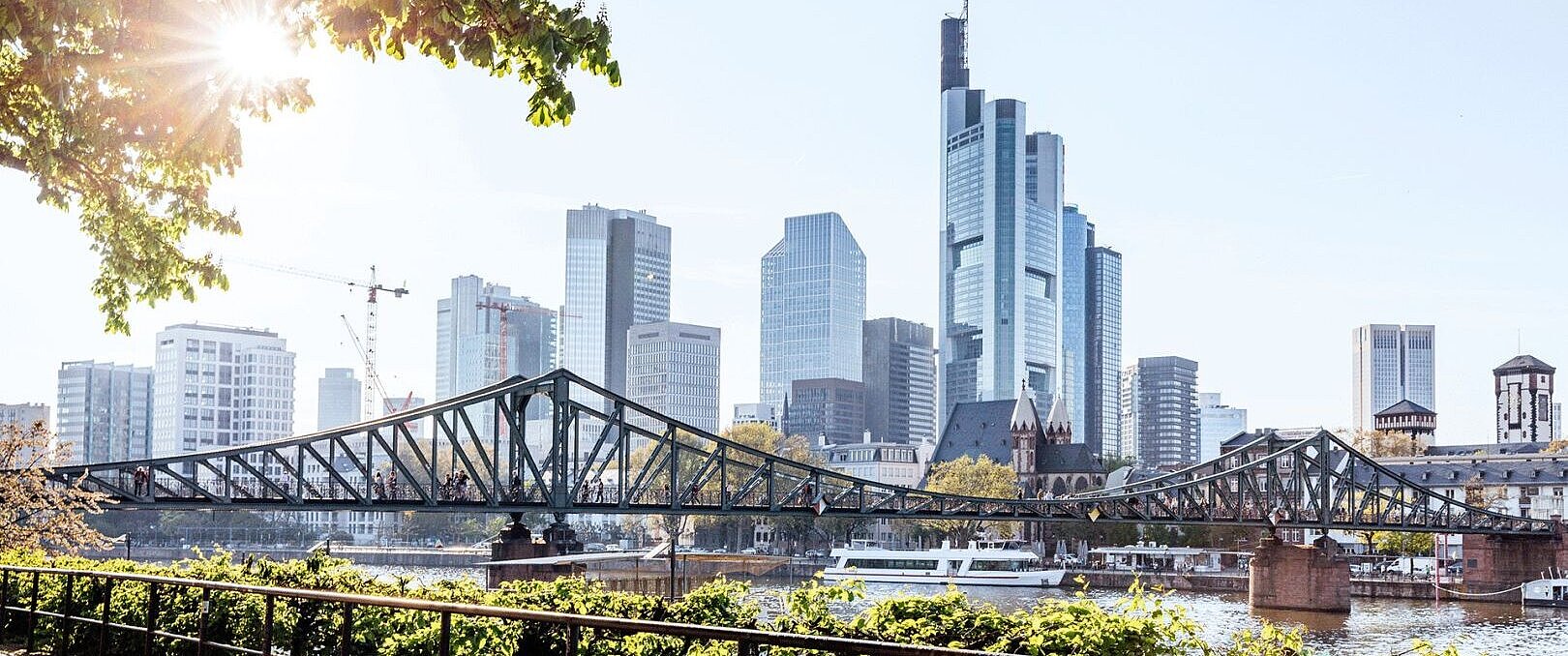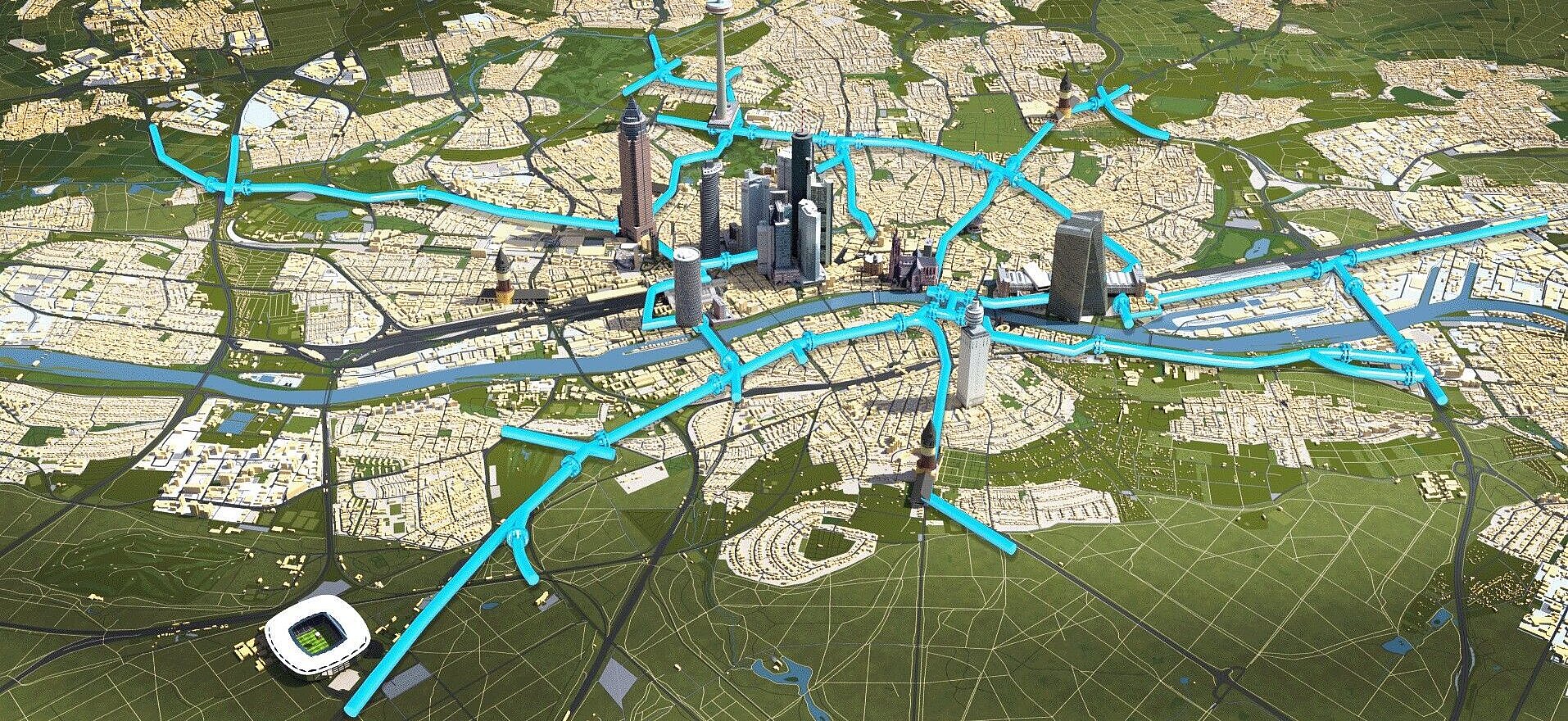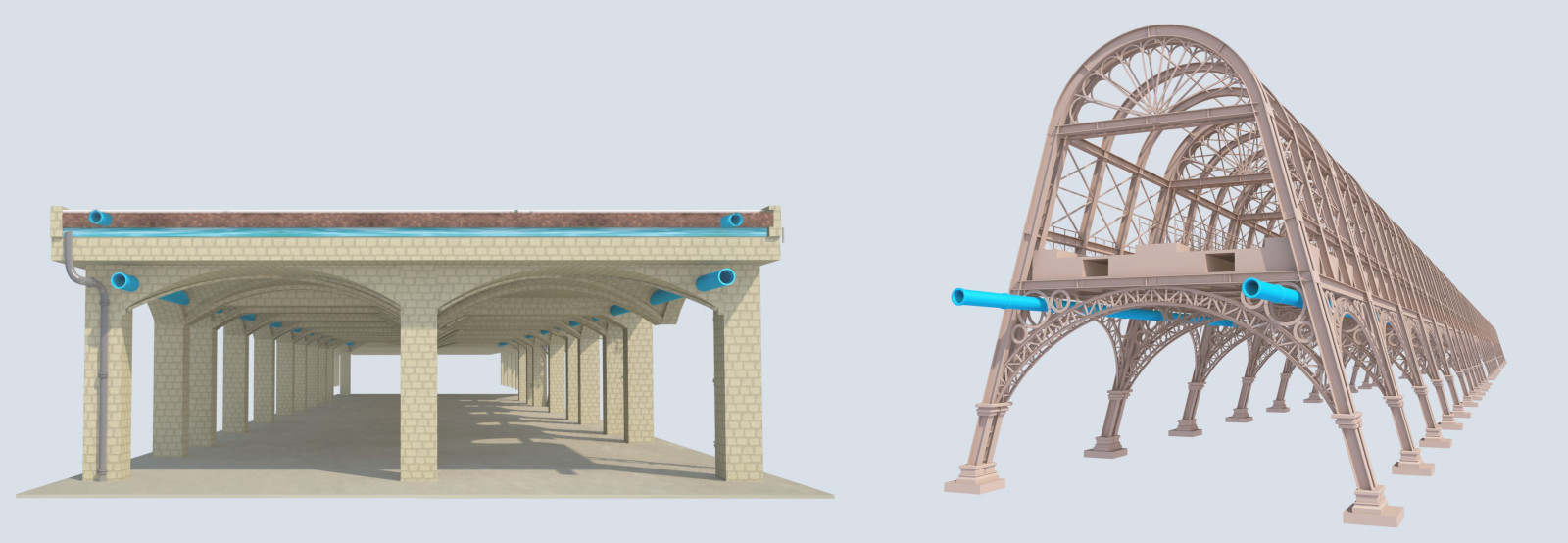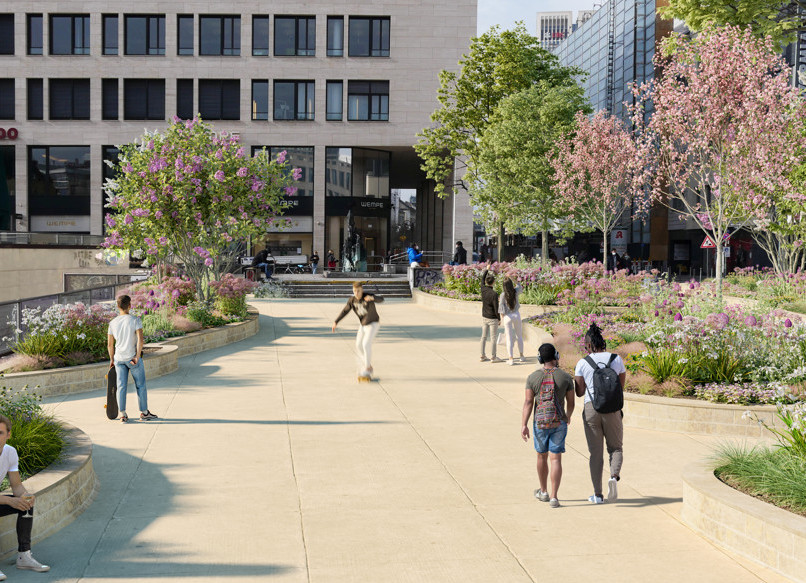Content: Tasks of the ring main, its structure and information about its operation
Just when the plant life needs water in dry phases most urgently, no rainwater accumulates, and the river water level of the Main is usually too low to take water from, as well. Once there is a heavy downpour, rainwater is distributed over the entire urban area or flowing into the riverbed, while the dry earth can not absorb it quickly enough.
In order to be able to always water exactly when plants need it on dry days, and to bring water to where green spaces need it most, a piping system must be created that collects decentralized water, brings it to storage locations, and from there brings it back out for distribution to the plant life.
With the help of the Frankfurt Bridges ring main, water can be collected, stored and redistributed. It is integrated into the structure of the Frankfurt Bridges along the entire route. For its operation, cleaning, controll, maintenance and frost protection must be ensured.








